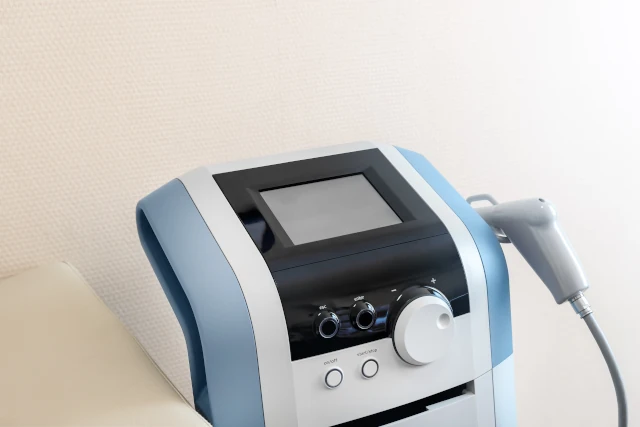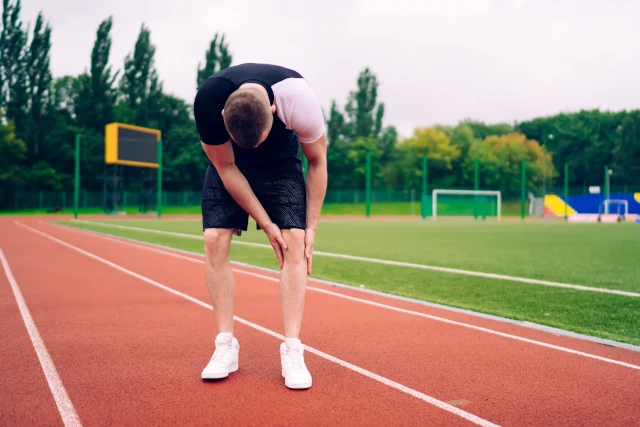
Top 10 Best Physiotherapy Machines for Pain Relief & Recovery
- Dr. Aishwarya Mehta (MPT)
Connect with our expert physiotherapist for personalized physiotherapy advice.
Physiotherapy machines play a crucial role in pain management, injury recovery, and muscle rehabilitation. Whether you are a professional physiotherapist, an athlete, or someone dealing with chronic pain, using the right physiotherapy equipment can speed up healing and improve mobility.
In this 2025 guide, we will explore the top 10 best physiotherapy machines for pain relief and recovery, backed by expert recommendations and user reviews.
Why Use Physiotherapy Machines?
Physiotherapy machines use advanced technologies like electrotherapy, ultrasound, shockwave therapy, and laser therapy to:
- Reduce muscle and joint pain
- Accelerate injury recovery
- Improve blood circulation
- Enhance muscle strength & flexibility
- Provide non-invasive pain relief
Now, lets dive into the best physiotherapy machines available in 2025.
- TENS (Transcutaneous Electrical Nerve Stimulation) Machine
- a. Best for: Chronic pain, arthritis, sciatica, and muscle spasms
- b. How it works: Delivers mild electrical pulses to block pain signals.
- EMS (Electrical Muscle Stimulation) Machine
- a. Best for: Muscle recovery, strength training, and atrophy prevention
- b. How it works: Stimulates muscle contractions using electrical impulses.
- Ultrasound Therapy Machine
- a. Best for: Soft tissue injuries, tendonitis, and deep tissue healing
- b. How it works: Uses sound waves to promote tissue repair.
- Shockwave Therapy Machine
- a. Best for: Plantar fasciitis, shoulder pain, and calcific tendonitis
- b. How it works: Uses high-energy sound waves to stimulate healing.
- Infrared Therapy Device
- a. Best for: Joint pain, inflammation, and muscle stiffness
- b. How it works: Penetrates deep tissues with infrared heat.
- Laser Therapy (LLLT - Low-Level Laser Therapy) Machine
- a. Best for: Wound healing, nerve pain, and post-surgery recovery
- b. How it works: Uses low-intensity lasers to reduce inflammation.
- Interferential Therapy (IFT) Machine
- a. Best for: Deep tissue pain, edema, and muscle spasms
- b. How it works: Uses medium-frequency currents for pain relief.
- Cryotherapy Machine
- a. Best for: Acute injuries, swelling, and post-workout recovery
- b. How it works: Applies extreme cold to reduce inflammation.
- Continuous Passive Motion (CPM) Machine
- a. Best for: Post-surgery rehab (knee, shoulder, elbow)
- b. How it works: Gently moves joints to prevent stiffness.
- Hydrotherapy Massage Machine
- a. Best for: Muscle relaxation, circulation, and lymphatic drainage
- b. How it works: Uses water jets for deep tissue massage.
How Physiotherapy Machines Work: A Patient Guide
- TENS (Transcutaneous Electrical Nerve Stimulation)
- a. What it feels like: Gentle tingling sensation that distracts your nerves from pain signals.
- b. Best for home use: Yes - simple electrode placement on painful areas.
- EMS (Electrical Muscle Stimulation)
- a. What it feels like: Strong muscle contractions that may feel intense at first.
- b. Best for home use: With guidance - requires proper muscle targeting.
- Ultrasound Therapy
- a. What it feels like: Warm vibration as sound waves penetrate tissues.
- b. Best for home use: Professional models work best - requires technique.
Patient Tip: Start with low intensity and short sessions (10-15 mins) to test tolerance.
5-Step Guide to Choosing Your Machine
Step 1: Identify Your Need- For nerve pain: TENS
- For muscle rebuilding: EMS
- For deep tissue healing: Ultrasound
Beginners should start with TENS before trying more complex devices.
Step 3: Check Safety CertificationsLook for FDA-cleared or CE-marked devices.
Step 4: Set Your Budget- $50-$150: Basic TENS units
- $150-$300: Advanced combo devices
- $300+: Professional-grade equipment
Ask your physiotherapist: Which technology suits my condition best?
FAQs About Physiotherapy Machines
- Can I use physiotherapy machines at home?
Yes! Many portable physiotherapy devices like TENS, EMS, and infrared pads are designed for home use.
- Which is better: TENS or EMS?
TENS is best for pain relief while EMS is ideal for muscle recovery & strengthening.
- Are physiotherapy machines safe?
Most are FDA-approved and safe when used correctly. Consult a physiotherapist for guidance.
- How often should I use a physiotherapy machine?
Follow manufacturer guidelines—typically 15-30 minutes per session, 2-3 times daily.
Final Thoughts
Best physiotherapy machine can significantly improve pain relief, mobility, and recovery. Whether you need electrotherapy, ultrasound, or shockwave treatment, there is a device tailored to your needs.
Connect with our expert physiotherapist for personalized physiotherapy advice.



